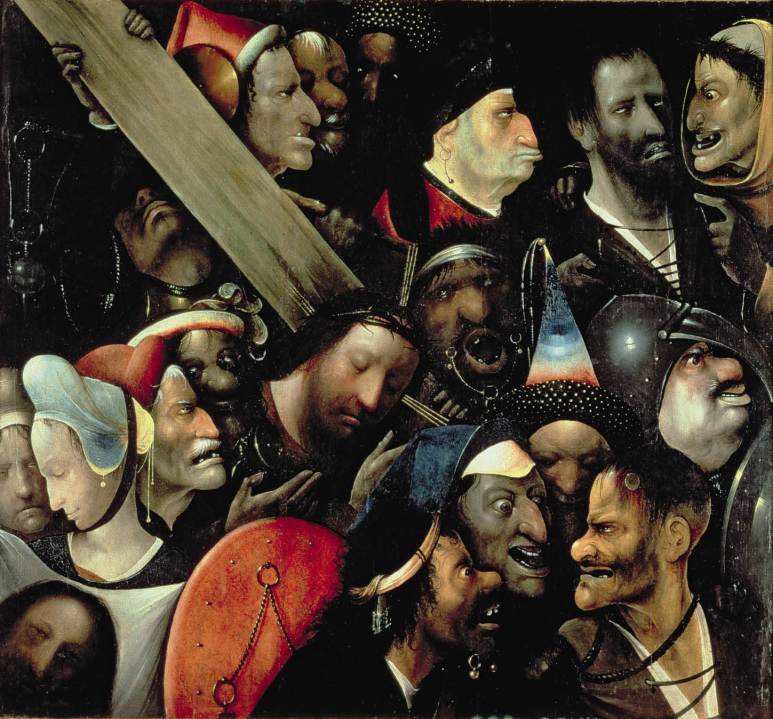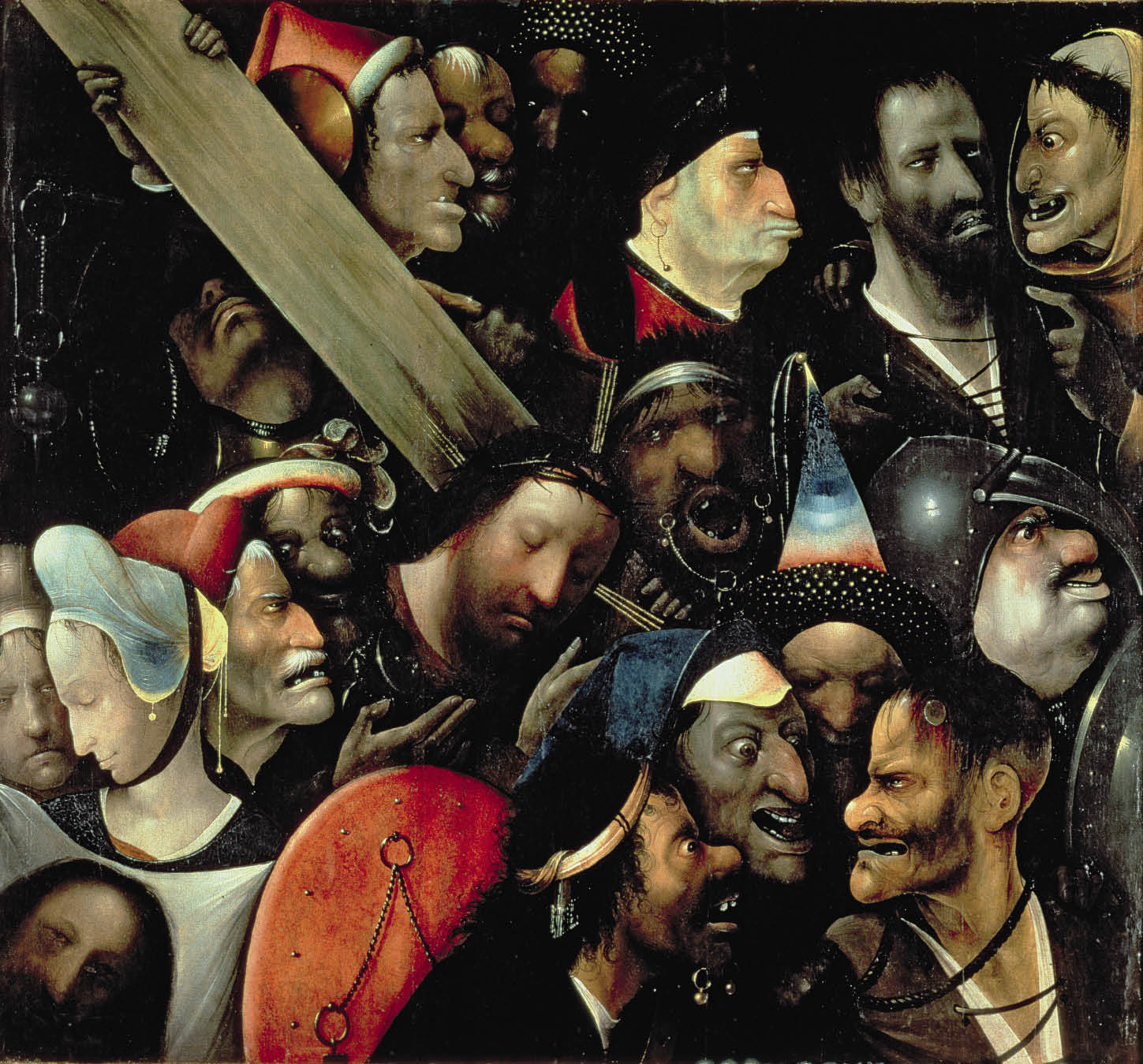Hieronymus Bosch had a distinctive view of our debased humanity, most distinctly expressed in his paintings of Christ’s Passion, says Michael Prodger
Carl Jung described the painter Hieronymus Bosch as ‘the master of the monstrous…the discoverer of the unconscious’. He was, however, only half right. While it is true that Bosch has no peers as a conjurer of phantasms and grotesques, he was no proto-psychologist: he was a man of his times.
Bosch lived c.1450–1516 so his times were the late Middle Ages and there was no such thing as the unconscious then — there was the Bible. All human behaviour, good or ill, could be ascribed either to God or to the Devil. And, in Bosch’s worldview at least, the Devil was in the ascendant. His was a deeply pessimistic view of human nature and his paintings — of which there are only 25 certified examples known — all deal in one form or another with the triumph of sin and the pervasiveness of evil.
Whether Bosch was a misanthrope in life or just in his art is impossible to know. Although he was celebrated in his own lifetime and his work collected by the Burgundian and Habsburg overlords of his native Low Countries, little is known of the painter’s personality. He died at a point at which religious certainties were beginning to unravel — only a year before Martin Luther wrote The Ninety Five Theses — but seems himself to have been a staunch Catholic. He was a lifelong member of the ultra-orthodox Brotherhood of Our Lady in his hometown of s’Hertogenbosch (from which he took his name) and produced paintings, decorative work and stained glass for them. The anti-clericalism that appears in his art is perhaps no more than him extending his stern morality to include erring priests as well as a bestial laity.
While Bosch expressed his distinctive view of debased humanity in such complicated allegories as ‘The Garden of Earthly Delights’, it found its most distilled form in his paintings of Christ’s Passion. He returned to the events preceding the crucifixion again and again, paring them down to a stark but not always simple contrast between good and evil. One of the most powerful of these paintings is ‘Christ Carrying the Cross’, painted some time after 1500 and now in the Museum voor Schone Kunsten in Ghent.
In this dark, flat and compacted image, Christ shoulders his cross for his stumbling procession to Calvary. He makes his way through a dense throng of 17 figures who fill the frame with snarling features and outlandish headdresses. Most are oblivious to his suffering, only two are friendly: Simon of Cyrene, the man forced to help Jesus with his load and whose upwards-tilted face is almost obscured as he lifts the beam of the cross with both hands, and Saint Veronica, the only woman in the picture, who looks down at the veil she has just given Christ to wipe his face with and which now bears his imprint.
The picture also includes another of Bosch’s favoured themes, the mocking of Christ. Here, though, he is not the only one being abused. Opposite Simon and Veronica in the painting — and representing opposing states of grace, too — are Christ’s two companions-to-be in death. In the bottom right-hand corner, with a grimace of defiance, is the bad thief. In the top right-hand corner, accepting of his fate, is the good thief. Each of the three condemned men has a cluster of contorted faces around him goading him on to Golgotha. Christ alone refuses to acknowledge his tormentors. He is literally and metaphorically the still centre of this storm of abuse which threatens to swallow him up as he moves haltingly forward, deep in thought, uncomplaining and resigned, a single tear forming on his lower lashes.
The Bible and the Apocrypha include several accounts of Christ’s enemies, including the strange legend of a woman who hated him so much that she lit the way for the soldiers to arrest him in the Garden of Gethsemane and then ran home and instructed her blacksmith husband to make the nails for the crucifixion. Bosch’s mockers, though, are a motley collection of soldiers, monks and merchants, exactly the sort of people he would have seen about him every day. In a linked painting, ‘Christ Mocked’ in the National Gallery, Christ’s adversaries are recognisable, so naturalistic in fact that they might well be portraits. But in the Ghent picture he has turned them into caricatures, a repellent collection culled from gargoyles, misericords and the marginalia of illuminated manuscripts. This is what faithlessness does to people, he suggests; it removes their humanity to reveal the beast beneath.
It is noticeable that Bosch chose to ignore both the Renaissance humanism that had already permeated the Netherlands and the example of his fellow painters. If Italian painting of the same period offers both light and hope, the darkness of Bosch’s painting is that of the light of reason extinguished, and his universe is anything but rational. There was a widespread belief at the time that some sort of millenarian crisis was due in the year 1500 and Bosch’s painting does indeed suggest that all chance of redemption has passed and that hellfire was in the offing.
And Bosch turned his back on artistic progress, too. He came from a tradition started by Jan van Eyck that was marked by an exquisite naturalism and finesse but, while peers such as Memling, Massys and Bouts based their work on such precepts, Bosch took an entirely individual path. His was a resolutely individualistic approach that belonged in spirit to Gothic art and the mentality of the Middle Ages.
There is, though, nothing to suggest that Bosch was some sort of swivel-eyed fanatic, even though some historians have tried to link him with various dissident sects, including the Adamites, who were given to celebrating the tree and worshipping in the nude. Or indeed that he was a Marxist avant la lettre and that the figures deriding Jesus in ‘Christ Carrying the Cross’ are representatives of the ruling class. The evidence of the painting suggests a more orthodox viewpoint. It can be read as an allegory of ignorance but it also relates to the theme of the ‘perpetual Passion’, the idea that Christ was derided in his own time and that even after his death humanity continues the derision by ignoring his example.
The uncomfortable but inescapable message of ‘Christ Carrying the Cross’, which in its graphic condensing of space makes the viewer a participant, is that we are the mockers, too. The 16th-century Spanish writer José de Sigüenza noted that: ‘The difference between the work of Bosch and that of other painters lies in the fact that the others depict man as he appears on the outside. Only Bosch dared to paint him the way he is on the inside.’ The painting may be a distorting mirror but it is a mirror none the less.






Comments